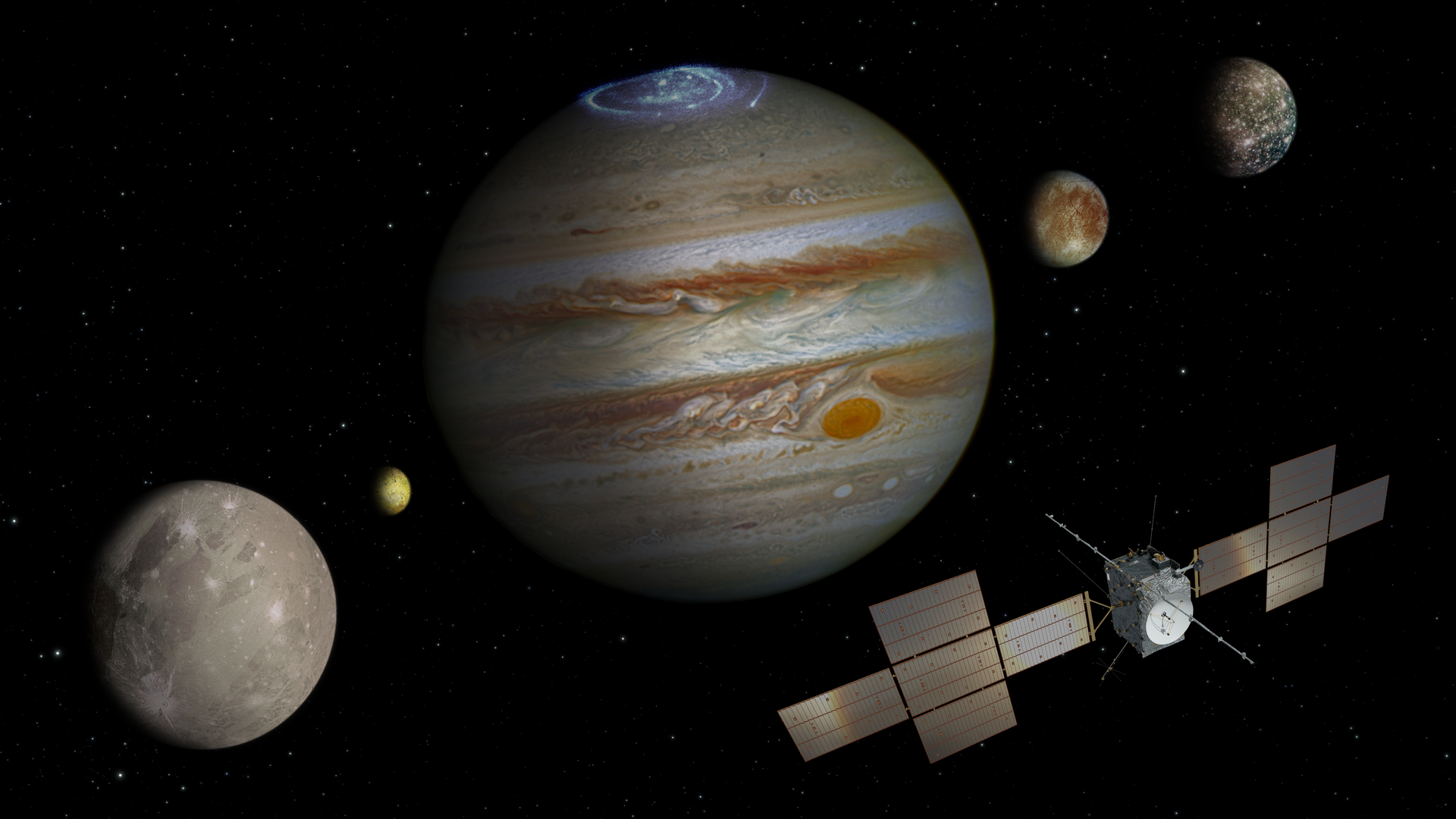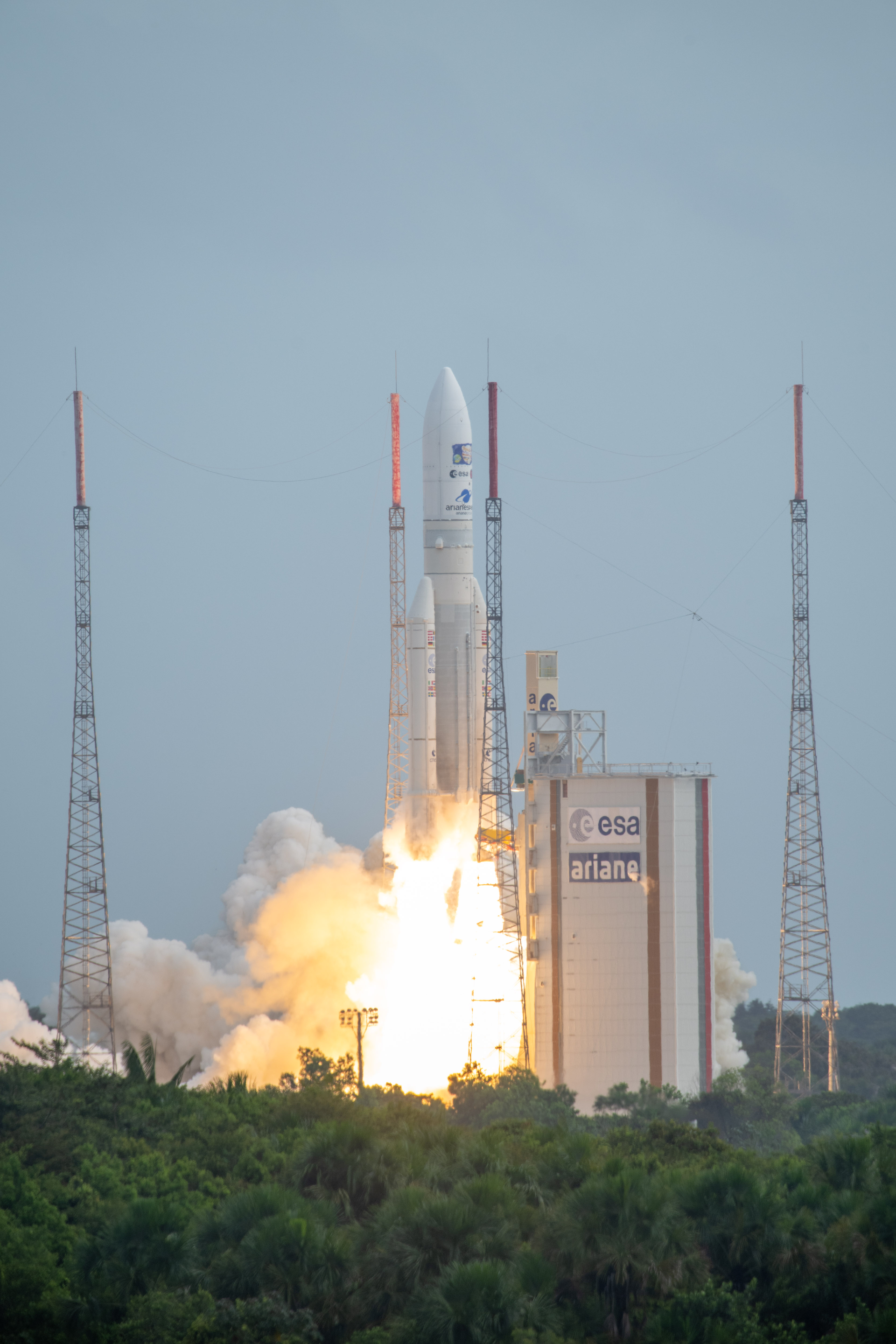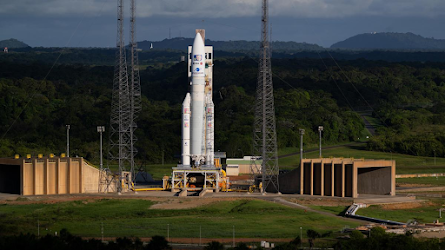
Image credits: European space agency
The European Space Agency on 14th April 2023 launched JUpiter ICy moons Explorer (JUICE) spacecraft by Ariane5 launch vehicle from its spaceport, French Guiana at 09:14 am local time (12:14 UTC). After the spacecraft separated from the rocket, it established a successful radio signal connection with the ground at 13:04 UTC.

Image credits: European space agency
Journey of the spacecraft
The spacecraft aims to explore icy moons of Jupiter and the gas giant itself. The mission plans to reach Jupiter in July 2031 after four gravity assists and eight years of travel covering the distance of 628 million kilometres from Earth. In December 2034, the spacecraft will enter orbit around Ganymede- the largest moon of Jupiter for its close-up science mission. JUICE is the first large-class mission in the ESA Cosmic Visions 2015-2025 programme and its selection was announced on 2 May 2012.
The ESA collaborated with space agencies around the world for technology partnership. NASA provided the UV imaging spectrograph to characterise the composition and dynamics of the exospheres of the icy moons, to study the Jovian aurorae, and to investigate the composition and structure of the planet’s upper atmosphere. The Japanese space agency JAXA contributed hardware for several of the instruments on board the spacecraft, while the Israeli space agency, ISA contributed hardware for a transmission experiment. Equipped with 10 instruments in total, the spacecraft is set to analyse the solar system’s largest planet as well as its three icy moons: Europa, Ganymede and Callisto. JUICE weighs about 4800 kilograms and carries fuel of 3000 kilograms.
Objective of JUICE
Jupiter being the largest planet of the solar system has a huge magnetic field and has an impact on its moons. JUICE will find out how this affects the icy moons surrounding the planet. It will look for the comprehensive picture of Jupiter by trying to understand its origin, history, and evolution. Furthermore, it will look for a potential habitable environment by analysing the water underneath the icy crust of jovian moons.

Image credits: NASA
“ By studying Jupiter and its moons, JUICE will help astrobiologists understand how habitable worlds might emerge around gas giant planets. The icy moons of Jupiter are also primary targets for astrobiology research in the Solar System. Moons like Europa are believed to harbour oceans of liquid water beneath their icy surfaces, and it is possible that these oceans could be habitable for life as we know it”. says NASA.
JUICE’s visible-and-infrared spectrometer will detect surfaces composition of the icy moons. It will identify and map minerals across Ganymede’s surface, understand the formation of some of Europa’s and Callisto’s complex landforms, and look for organic molecules on each of the moon’s surfaces as signs of their potential habitability. A laser-altimeter on board will complement this data by mapping 3D shapes of features on the moons
NASA’s Hubble space telescope observed hints of water vapour in Ganymede’s exosphere (thin atmosphere) and water plumes erupting on Europa. JUICE’s ultraviolet spectrometer and charged particle detector can confirm these observations with empirical evidence.
Is Ganymede habitable?
Ganymede is the only moon in our solar system with its own magnetic field. JUICE’s magnetometer will measure it, explore how Jupiter’s field interacts with it, and study how charged particles raining down along Jupiter’s field lines cause glowing auroras on Ganymede. Hubble and Galileo’s spacecraft strongly suggest the presence of a 100 kilometre-thick-ocean (about 60 miles) — 10 times deeper than Earth’s — buried under 150 kilometres (about 93 miles) of ice. Such an ocean would affect magnetic field lines passing through it, the magnetometer can sense such changes in the field and confirm the presence of an ocean.
CONCLUSION
JUICE in its four years of service will provide us with a comprehensive map of Jupiter and its moons.JUICE isn’t equipped to detect life but can provide insights into habitable conditions such as liquid water, heat source, and organic material needed to sustain life. The mission will characterise these moons as both planetary objects and possible habitats, explore Jupiter’s complex environment in depth, and study the wider Jupiter system as an archetype for gas giants across the Universe.


